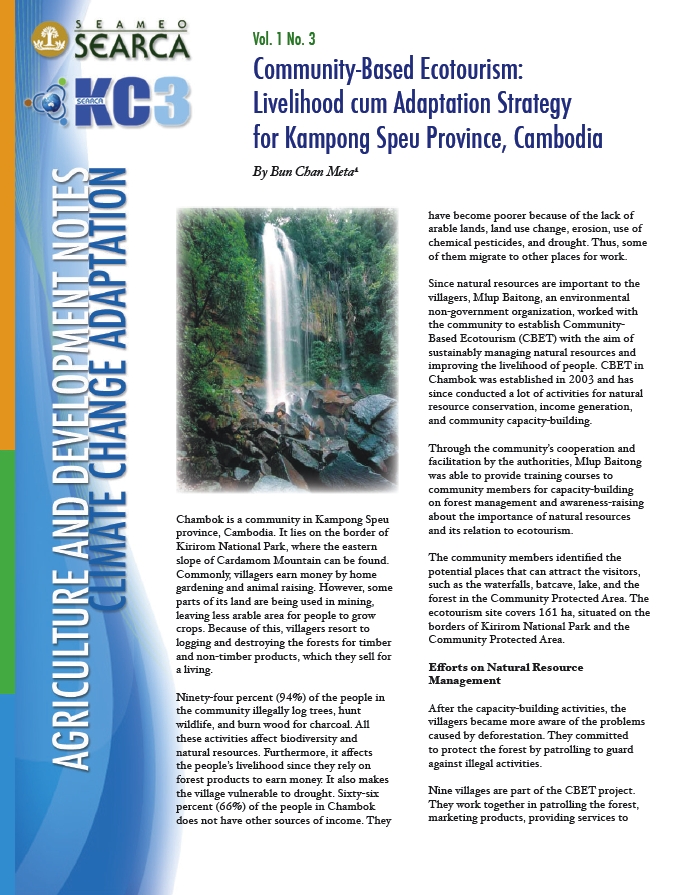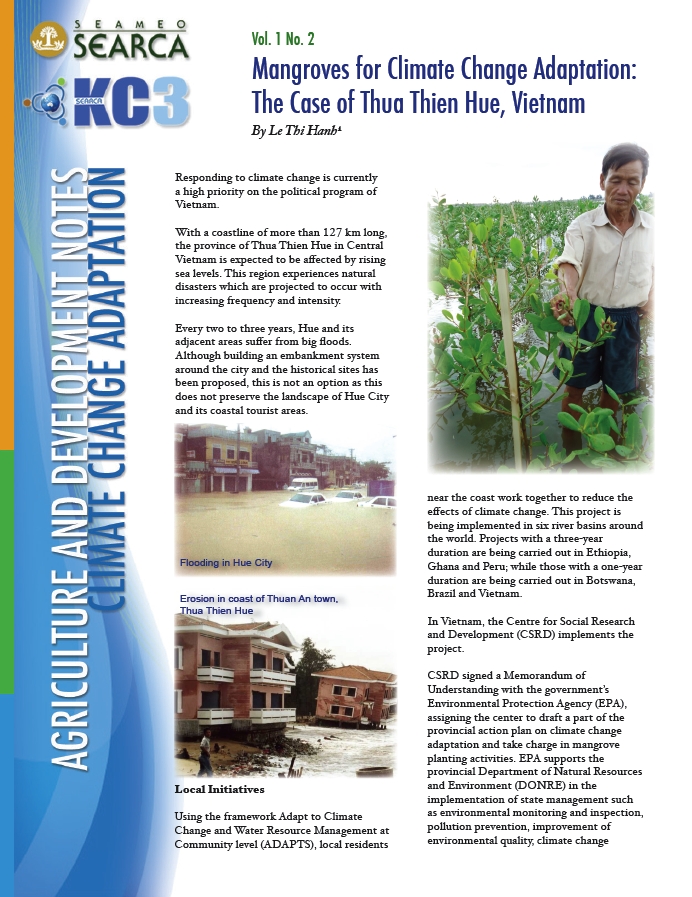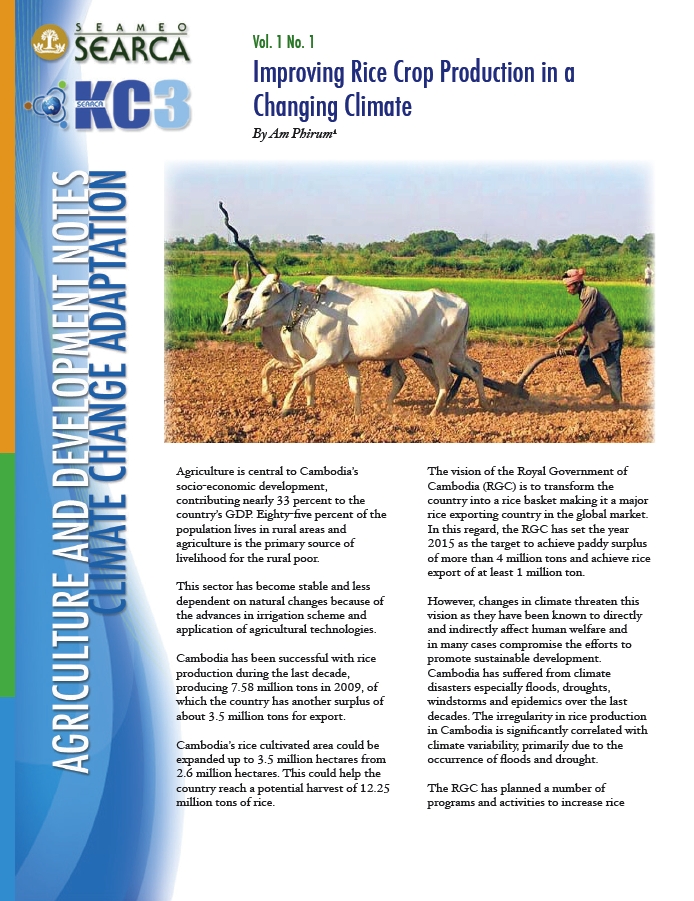Publications
This contains experience notes, adaptation notes, policy briefs, policy papers, technical reports, stories on good practices, and other publications related to climate change adaptation and mitigation in Southeast Asia not just from SEARCA, but also from KC3's partners and other agencies/institutions.
Launched on World Oceans Day 2011, Taking Steps Toward Marine and Coastal Ecosystem-Based Management: An Introductory Guide, explains in simple, accessible language how sharing knowledge and best practices across different sectors can make marine management more effective. Using over 20 case studies and success stories, ranging from polar ecosystems in Antarctica to atolls in the Indian Ocean, the publication offers guidance to marine managers towards achieving long-term sustainability, from initial planning of how to deal with environmental degradation to on-site implementation…
Chambok is a community in Kampong Speu province, Cambodia. It lies on the border of Kirirom National Park, where the eastern slope of Cardamom Mountain can be found. Commonly, villagers earn money by home gardening and animal raising. However, some parts of its land are being used in mining, leaving less arable area for people to grow crops. Because of this, villagers resort to logging and destroying the forests for timber and non-timber products, which they sell for a living.…
Responding to climate change is currently a high priority on the political program of Vietnam. With a coastline of more than 127 km long, the province of Thua Thien Hue in Central Vietnam is expected to be affected by rising sea levels. This region experiences natural disasters which are projected to occur with increasing frequency and intensity. Every two to three years, Hue and its adjacent areas suffer from big floods. Although building an embankment system around the city and the historical…
Agriculture is central to Cambodia’s socio-economic development, contributing nearly 33 percent to the country’s GDP. Eighty-five percent of the population lives in rural areas and agriculture is the primary source of livelihood for the rural poor. This sector has become stable and less dependent on natural changes because of the advances in irrigation scheme and application of agricultural technologies. Cambodia has been successful with rice production during the last decade, producing 7.58 million tons in 2009, of which the country has another surplus of about 3.5 million tons…

















